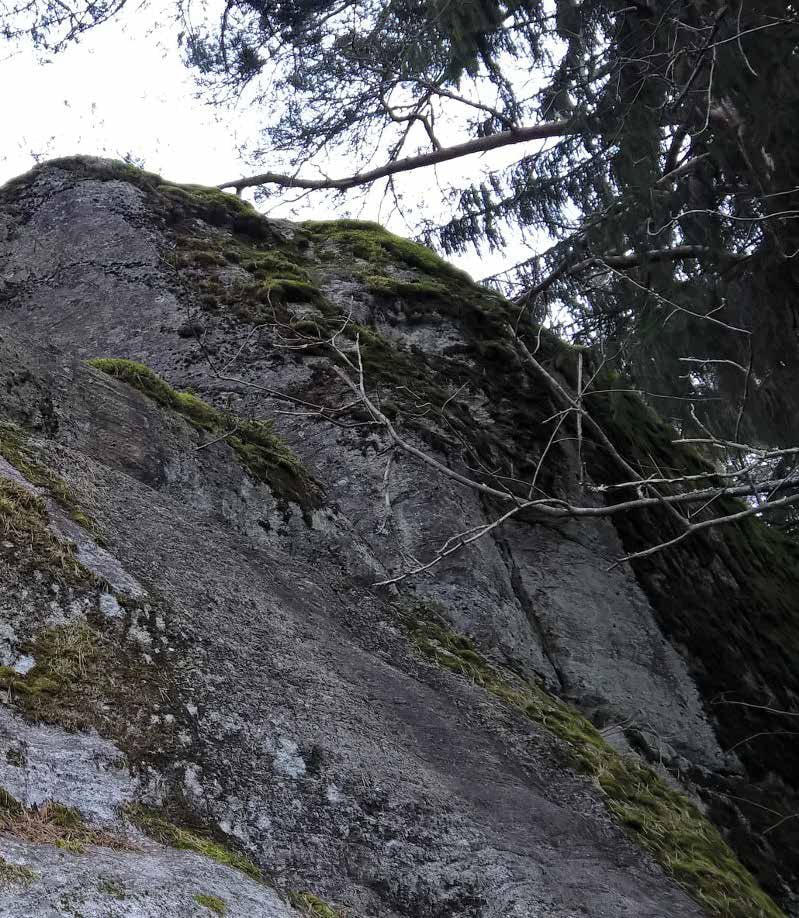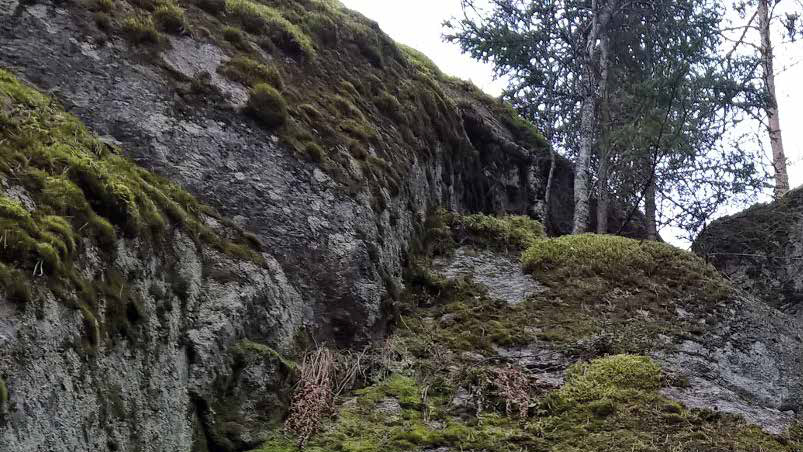Along the Kuokkalammi road, about 20 metres off, is a rock with one side a sheer drop like a wall, almost ten metres high. People call it ‘Jumping-rock’. According to oral tradition, the rock got its moniker during the Greater Wrath, when the Russians had forced Finns to jump off the precipice. Sharp-pointed iron spikes had been set at the foot of the rock wall. The jump had to be made barefoot and repeated until the feet hit the spikes.
They forced me to jump. Not once, but twice.
The first time, I managed to avoid the sharp spikes. At the final stage of the long drop I aimed my bare feet at the empty space between the metal spikes. I thudded down on the hard earth and the spikes just brushed my skin. My left calf got a scrape, with a bleeding flap of skin hanging down.
My brother was not so lucky. Crying and screaming, he flopped right onto the spikes. There was silence while the soldiers picked up my brother’s lifeless body and flung it on a cart, like a worthless piece of waste, among the other dead and wounded.
The commanding officer told me to climb to the top of the rock again. In a powerless rage and fury, I began the arduous journey to the heights. The soldiers watched my progress, harangued and poked at me with their bayonets, laughing at my desperate attempts to shake them off. When I finally reached the spot from where I was to throw myself off for a second time, I raised my eyes to where our village was burning like an inferno. The crackle of the flames was mixed with monotonous drumming and people’s screams of horror.
Hurtling down, I still heard the sound of the broken tune. Then nothing.
Pekka Vartiainen
Transl. Annira Silver
Location on map

The story and the pictures are a part of Tarinajoki book (River of Stories), made in Rural Explorer project. As part of a culture tourism project, stories arising from the body of folk narratives and history also have a function in relation to the productisation of tourism. The stories are linked to real locations.
